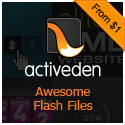There are hundreds of lesser-known but highly-useful open-source applications available for Windows. A few of my favorites are below.
These applications range from moderately popular to downright obscure, but all of them are open-source and FREE. All of them are worth the install time if you have never tried them. As a side bonus, many of them are cross-platform as well.
Here they are, in random order:
 1. ZScreen
1. ZScreen
ZScreen is an open-source screen capture program that quietly resides in your system tray until needed. It can take screenshots of a selected region, the active window, or the entire screen. It can even send screen captures via FTP and copy the URL to your clipboard, all with just a single keystroke. Oh yeah, it can also interface with image editing software, such as Photoshop or Paint.net.
If you frequently take screenshots, ZScreen is light years faster than pressing Print Scrn and pasting into MS Paint.
 2. PDFCreator
2. PDFCreator
PDFCreator allows you to create PDFs from any program that can print. Once it’s installed, simply “print” to the virtual printer that it creates, and the resulting document can be read on any computer with Adobe Reader (or comparable software).
There are several similar programs, but if you dig open-source software, PDFCreator trumps many of the others.
 3. KeePass
3. KeePass
KeePass is one of those applications that you don’t realize how badly you need until you start using it. It securely stores and manages the login information that you use for e-mail, websites, banks, etc. Unless you always use the exact same login information (a terrible idea!), you need KeePass. It’s even available in a portable version.
I use KeePass to manage hundreds of usernames and passwords. I’d go crazy without it.
 4. HandBrake
4. HandBrake
HandBrake is a DVD to MPEG-4 converter that allows you to stick a DVD in your drive and have the video converted to a digital file for convenient viewing. It’s great for minimizing wear-and-tear on DVDs, plus it’s handy if you travel a lot and want to watch movies on your laptop.
For best results, use it in conjunction with DVD43.
 5. Notepad++
5. Notepad++
Let’s face it - Windows Notepad is a pretty wimpy text editor, and there are many better alternatives. Notepad++ kicks the original Notepad in the junk pretty hard. Best of all, it interfaces nicely with Filezilla. Here are the features:
Syntax Highlighting and Syntax Folding
User Defined Syntax Highlighting
Auto-completion
Multi-Document
Multi-View
Regular Expression Search/Replace supported
Full Drag ‘N’ Drop supported
Dynamic position of Views
File Status Auto-detection
Zoom in and zoom out
Multi-Language environment supported
Bookmark
Brace and Indent guideline Highlighting
Macro recording and playback
 6. Peazip
6. Peazip
PeaZip is my current compression/zip utility of choice. It can open almost any archive type imaginable (including ACE - be sure to grab the separate plug-in). Peazip can split/join files, offers 256-bit encryption, and integrates nicely into the right-click contextual menu. It even manages to look good in the process.
Hey, there’s also portable version AND a Linux version available. Nice.
 7. BonkEnc
7. BonkEnc
BonkEnc is a fantastic CD ripper, encoder, and audio converter. It’s tiny, lightweight, and is my application of choice for ripping and encoding CDs. BonkEnc can produce MP3, MP4/M4A, Ogg Vorbis, AAC, Bonk and FLAC files, and also features CDDB/freedb lookup.
Along similar lines, if you’re looking for a batch audio/video transcoder, take a look at MediaCoder.
 8. Launchy
8. Launchy
I admit: I’ve been spoiled by Quicksilver on Mac OS X. My favorite similar program for Windows is Launchy, an open-source keystroke launcher.
To launch a program, press Alt + Spacebar, and then type a few letters in the program name and press Enter. Boom! You can also browse folders the same way. Once you get used to it, it’s a huge time saver.
 9. Cabos
9. Cabos
Cabos is a Gnutella file-sharing program originally based on Limewire and Acquisition. Unlike some other file-shaing programs, there’s no spyware, adware, or any other crap to junk up your computer.
 10. GnuCash
10. GnuCash
If you recoil in horror at the bloat of financial programs such as Microsoft Money and Quicken, GnuCash may suit your needs. It’s a slimmer version of those programs, and it has all the features I need for managing my meager amount of money.
The interface is easy enough to understand. It actually looks a lot like a digital checkbook ledger. Don’t be fooled, though - GnuCash can handle the needs of much more demanding users.
 11. RSSOwl
11. RSSOwl
RSSOwl is a cross-platform RSS reader. It allows you to easily track updated content on multiple sites. I really like the tabbed interface.
I find RSSOwl especially useful on a laptop, but on my always-connected desktop I prefer a web-based RSS reader, such as Google Reader.
 12. VirtualDub
12. VirtualDub
VirtualDub is a free video capture and processing utility. Wait, it’s more than that. VirtualDub lets you capture video and then manipulate it with a multitude of plug-ins and filters. It isn’t a full-fledged non-linear editor, but it packs a powerful punch for a free program.
If you work with video on Windows a lot, you probably already know about VirtualDub. If you’re just getting into video editing, you should grab VirtualDub immediately. Heck, it doesn’t even require installation.
 13. Eraser
13. Eraser
If you are paranoid about someone else recovering your sensitive deleted data, you owe it to yourself to check out Eraser. When you delete a file, your operating system really just removes the reference to the file from the file system table. The actual data is still present and can be recovered with an undelete utility.
Eraser securely shreds your sensitive data by overwriting several times with multiple, carefully-selected patterns. In other words: once you erase it, it’s gone!
 14. Paint.NET
14. Paint.NET
Paint.NET is to MS Paint what NotePad++ is to Windows Notepad. It’s a dandy little photo editor that supports layers, unlimited undo, and a host of other features. By all rights, it should come with Windows by default.
Paint.NET isn’t meant to fill the shoes of bigger applications like Photoshop or The GIMP, but I use it almost every day for basic photo manipulation.
 15. InfraRecorder
15. InfraRecorder
Need CD/DVD burning software for Windows? It doesn’t get much better than InfraRecorder (by the same author of TUGZip).
InfraRecorder can burn audio/data discs. It can handle multi-session discs, creation and burning of disc images (ISO and BIN/CUE), and can even save audio/data track information to separate files. Oh yeah, it also has a portable version.
 16. AutoHotkey
16. AutoHotkey
It’s hard to know where to begin with this one. What can you do with AutoHotkey? Almost anything!
For starters, by using custom keystrokes and mouse-clicks, you can automate practically any repetitive task. Define any shortcut for Windows. Remap keys and buttons any way you please. Control your mouse cursor with your keyboard. By writing your own scripts, the potential is limitless.
 17. GanttProject
17. GanttProject
If you need to do any project management, GanttProject will help you get everything organized. As the name implies, it uses Gantt charts and resource load charts to help break a project into a tree of tasks, complete with dependencies.
GanttProject even allows you to exchange data with Microsoft Project, though you may find that you have no reason to do so.
 18. MP3Gain
18. MP3Gain
MP3Gain is a simple and elegant application that serves one main purpose - to automatically adjust MP3 files so they all play at the same volume. It does it without decoding and re-encoding, so the quality remains the same. No more fiddling with the volume between different songs.
 19. Filezilla
19. Filezilla
Way back in the day, I used WS_FTP. Now I exclusively use Filezilla for my file transfer needs. It supports SFTP, allows for bandwidth speed limits, and easily saves server settings.
Best of all, it seamlessly combines with text editors (such as Notepad++) for quick-and-dirty file editing on the remote server!
 20. Battle for Wesnoth
20. Battle for Wesnoth
After all this downloading, it’s time to take a break and have some fun. Battle for Wesnoth is a single/multiplayer turn-based strategy game with a fantasy theme. You can build an army from different kinds of units, such as trolls, elves, dwarves, and orcs. There are a number of standard campaigns included, plus a growing number of user-authored campaigns available on the campaign server.
The music is well done. As a composer, I appreciate games that incorporate an orchestral soundtrack.
 21. Alien Arena
21. Alien Arena
If fantasy isn’t your thing, maybe you will like Alien Arena, a deathmatch-type game along the lines of Quake III and Unreal Tournament. The action is fast and furious, and for me mostly consists of running around and dying. I tend to suck at first-person deathmatch games anyway, but the game is quite engrossing.
The 2008 version just came out earlier this year, so join the servers and start fragging.
——
Those are some of my favorite, lesser-known open-source applications for Windows. If you have any to add, feel free to comment below.
Posted on : Saturday, March 21, 2009







 1.
1.  2.
2.  3.
3.  4.
4.  5.
5.  6.
6.  7.
7.  8.
8.  9.
9.  10.
10.  11.
11.  13.
13.  14.
14.  15.
15.  16.
16.  17.
17.  18.
18.  19.
19.  20.
20.  21.
21. 



